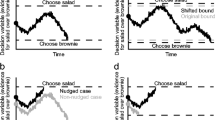Abstract
Arguments in the neuroenhancement debate are sometimes based upon idealistic scenarios involving the assumption of using a drug that has no or negligible side effects. At least it is often implicitly assumed – as technology and scientific knowledge advances - that there soon will be a drug with no or negligible side effects. We will review evidence from neuroscience, complex network research and evolution theory and demonstrate that - at least in terms of psychopharmacological intervention – on the basis of our understanding of brain function it seems inconceivable that there ever will be a drug that has the desired effect without undesirable side effects. We will illustrate this by reference to enhancing edge detection in V2 in monkeys and demonstrate that even for this localised single neuron coded function there would be numerous side effects. Taking the more realistic case of pharmacological enhancement that is inevitably associated with side effects will change consequentialist arguments for neuroenhancement and have implications for the conception of autonomy, specifically in the case of performance enhancement. We conclude that a neuroethics debate that aims to inform policy decisions should take these findings into account. We hope that our article will precipitate more interdisciplinary research in neuroscience and philosophy.
Similar content being viewed by others
Notes
(Personal conversation: Neuroenhancement conference University of Mainz, Germany, 2011).
President’s Council in Bioethics.
References
Synofzki, M., and T.E. Schlaepfer. 2008. Stimulating personality: Ethical criteria for deep brain stimulation in psychiatric patients and for enhancement purposes. Biotechnological Journal 3: 1511–1520.
Elliott, C. 1999. A philosophical disease. Bioethics, culture, and identity. New York: Routledge.
Kramer, P. 1993. Listening to Pronzac. New York: Viking.
Repantis, D., P. Schlattmann, O. Laisney, and I. Heuser. 2009. Antidepressants for neuroenhancement in healthy individuals: A systematic review. Poiesis & Praxis 6: 139–174.
Kirsch, I., and B.J. Deacon. 2008. Initial severity and antidepressant benefits: A meta-analysis of data submitted to the food and drug administration. Public Library of Science Medicine 5: 26.
Savulescu, J., A. Sandberg, and G. Kahane. 2011. Well-being and enhancement. In Enhancing human capacities, ed. J. Savulescu, R. ter Meulen, and G. Kahane. Oxford: Wiley Blackwell.
Dees, R.H. 2007. Better brains, better selves? The ethics of neuroenhancement. Kennedy Institute of Ethics Journal 17(4): 371–396.
Berghmans, R., R. ter Meulen, A. Malizia, and R. Vos. 2011. Scientific, ethical, and social issues in mood enhancement. In Enhancing human capacities, ed. J. Savulescu, R. ter Meulen, and G. Kahane. Oxford: Wiley Blackwell.
Sahakian, B., and S. Morein-Zamir. 2007. Professor’s little helper. Nature 450(7173): 1157–1159.
Douglas, T. 2011. Moral enhancement. In Enhancing human capacities, ed. J. Savulescu, R. ter Meulen, and G. Kahane. Oxford: Wiley Blackwell.
Palfai, T., and H. Jankiewicz. 1997. Drugs and human behaviour. New York: Superstock.
Bullmore, E., and O. Sporns. 2009. Complex brain networks: Graph theoretical analysis of structural and functional systems. Nature Reviews Neuroscience 10: 186–198.
da Rocha, A.F., F.T. Rocha, and E. Massad. 2011. The brain as distributed intelligence processing system: An EEG study. PLoS ONE 6(3): e17355. doi:10.1371/journal.pone.0017355.
Von der Heydt, R., H. Zhou, and H.S. Friedman. 2000. Representation of stereoscopic edges in monkey visual cortex. Vision Research 40: 1955–1967.
Disney, A.A., K.V. Domakonda, and C. Aoki. 2006. Differential expression of muscarinic acetylcholine receptors across excitatory and inhibitory cells in visual cortical areas V1 and V2 of the macaque monkey. The Journal of Comparative Neurology 499.
Spencer, D.G., E. Horvath, and J. Traber. 1986. Direct autodiographic determination of M1 and M2 muscarinic acetylcholine receptor distribution in the rat brain. Brain Research 380: 59–68.
Tang, Y.P., E. Shimizu, G.R. Dube, C. Rampon, G.A. Kerchner, and M. Zhuo. 1999. Genetic enhancement of learning and memory in mice. Nature 401: 63–69.
Cooke, S.F., and T.V.P. Bliss. 2003. The genetic enhancement of memory. Cell and Molecular Life Science 60: 1–5.
Author information
Authors and Affiliations
Corresponding author
Rights and permissions
About this article
Cite this article
Terbeck, S., Chesterman, L.P. Will There Ever Be a Drug with No or Negligible Side Effects? Evidence from Neuroscience. Neuroethics 7, 189–194 (2014). https://doi.org/10.1007/s12152-013-9195-7
Received:
Accepted:
Published:
Issue Date:
DOI: https://doi.org/10.1007/s12152-013-9195-7




